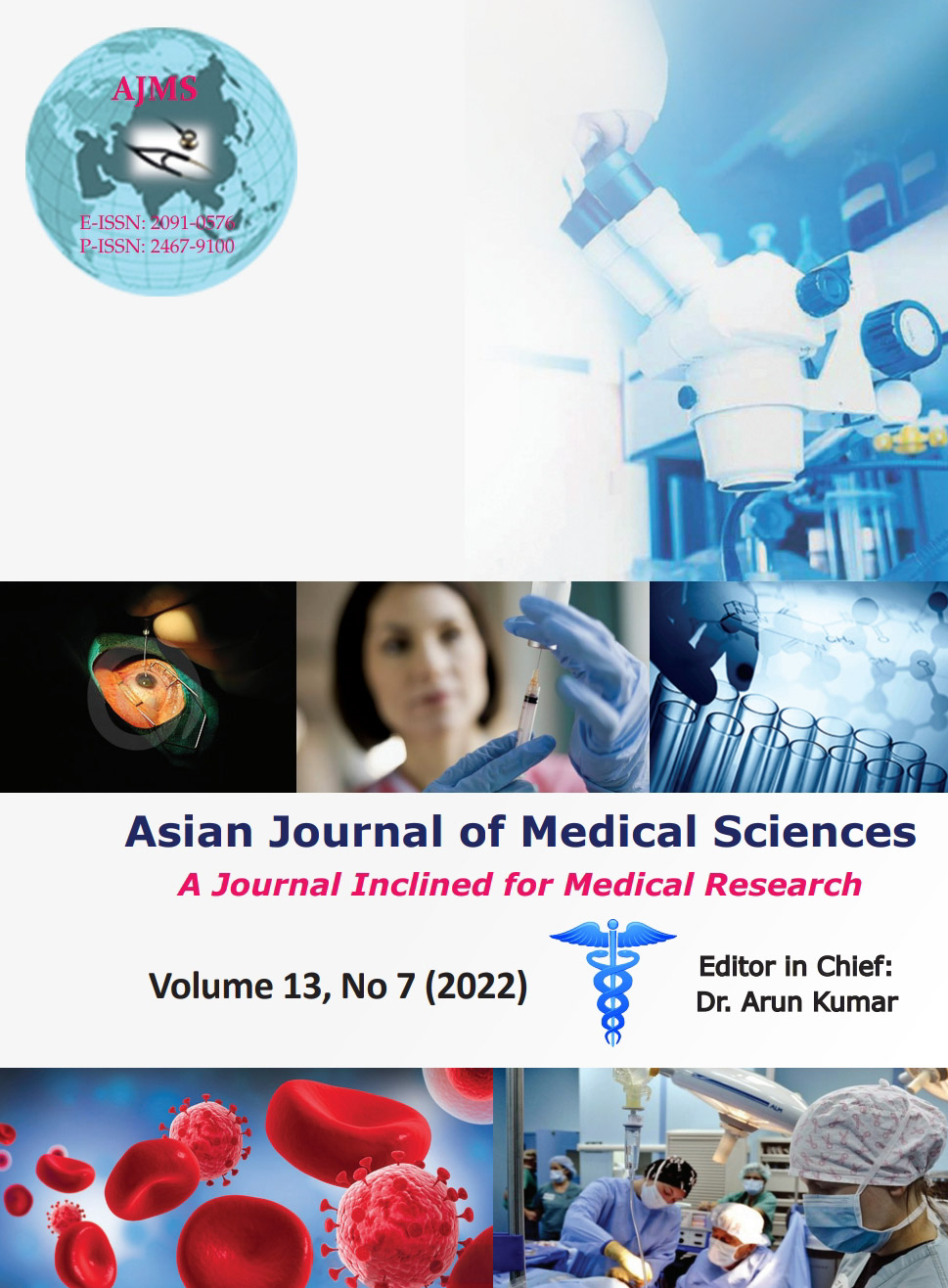An analytic cross-sectional study to explore the role of TNF-α level as a marker for diabetic polyneuropathy
Keywords:
Diabetic polyneuropathy, Painful neuropathy, Painless neuropathy, Tumour necrosis factor alpha, Type 2 diabetes mellitusAbstract
Background: Diabetes has reached epidemic proportion in India. The most common complication of Type 2 diabetes mellitus (T2DM) is diabetic polyneuropathy (DPN). Various theories have been proposed to explain development of DPN, among which newer concepts are activation of inflammatory pathways.
Aims and Objectives: The aim of the study was to determine the relationship between tumor necrosis factor alpha (TNF-α) levels and painless and painful variants of DPN in T2DM patients.
Materials and Methods: The study was carried out on 57 subjects. The subjects were divided into four groups; Group 1 had 15 healthy controls without diabetes; Group 2 had 12 control group patients of T2DM without neuropathy; 20 patients of T2DM with painful neuropathy were included in Group 3 and 10 T2DM patients with painless neuropathy. TNF-α level was measured by drawing 5 ml blood from individual patients using Ray Bio Human TNF-α enzyme-linked immunoassay kit.
Results: Plasma TNF-α level increases from non-diabetic control (221.7±46.91 pg/ml) to diabetic control (743.6±87.27 pg/ml) and also further increased in painful neuropathy patients (1343±283.8 pg/ml). Interestingly, TNF-α was found to be significantly decreased (441.4±118.3 pg/ml) in patients with painless neuropathy.
Conclusion: TNF-α level increased in diabetic neuropathy but did not correlate with severity of neuropathy.
Downloads
Downloads
Published
How to Cite
Issue
Section
License
Copyright (c) 2022 Asian Journal of Medical Sciences

This work is licensed under a Creative Commons Attribution-NonCommercial 4.0 International License.
Authors who publish with this journal agree to the following terms:
- The journal holds copyright and publishes the work under a Creative Commons CC-BY-NC license that permits use, distribution and reprduction in any medium, provided the original work is properly cited and is not used for commercial purposes. The journal should be recognised as the original publisher of this work.
- Authors are able to enter into separate, additional contractual arrangements for the non-exclusive distribution of the journal's published version of the work (e.g., post it to an institutional repository or publish it in a book), with an acknowledgement of its initial publication in this journal.
- Authors are permitted and encouraged to post their work online (e.g., in institutional repositories or on their website) prior to and during the submission process, as it can lead to productive exchanges, as well as earlier and greater citation of published work (See The Effect of Open Access).




